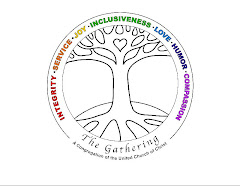
Teresa Rylander writes:
I recently met with a good friend who runs a large community foundation. It was his experience that many large foundations, even when they offer substantial grants to expand small, very well-meaning projects, at first grow and prosper, and then somehow eventually fail, in spite of good work by skilled people with the best of intentions.
He asked me about Bread for the Journey, a small local charity I founded twenty years ago, now operating in chapters across the country. He asked, “When you help so many local people get started from the ground up aren’t you just setting them up for failure? Can you even name five projects you helped get started that are still thriving after five years?” After the first dozen or so that tumbled from my memory, we both saw I could keep going for quite a while, and he conceded I had a point.
I then asked, “These well-intentioned programs that you support—how do they typically fail?” He told me about a fledgling community center that had begun as a small Quonset hut. The foundation supported an expansion program to include a new building, services for teens, an art program, an after school program, a GED program—all things that would benefit the community. “It was a great project,” he said. “So what happened?” I asked. “It was simply under funded. As the programs grew, they needed more funding and in an impoverished community it was hard to raise the money needed. Finally it just collapsed from lack of money.”
I offered an alternate explanation. “What if the problem was not that the projects were “under funded” but rather were “over-dreamed? What if, when they started, they grew organically and to scale because funding, experience, and wisdom all grew together, at the same rate. But at some point their essential mission changed; almost every non-profit I have worked with reaches this choice point: If we can do this much so well, wouldn’t it be better if we could do more, and help more people? What if—seduced by our American belief that the best is always the one that does the most—they began to over dream, to overreach their honest capacity? What if out of sheer, good-hearted desire to do as much as possible, they took on more than they could honorably do as well as what they had been doing before? Like climbing out too far on a branch that will not hold our weight, perhaps it simply collapses.
The issue of longevity, vitality, and sustainability of our life and work is often determined by our concept of scale. We are easily trapped by the presumption that bigger is better. If we create something that serves X number of people well, and runs effectively and easily, imagine how much more we could do if we only had twice as much, ten times as much? While this begins with some noble intention, even the best of intentions can be corrupted by a subtle undercurrent of pride and deep confusion about what, in any project, in any community, is enough.
From Chapter: "When Small is Beautiful" from A Life of Being, Having, and Doing Enough by Wayne Muller


No comments:
Post a Comment